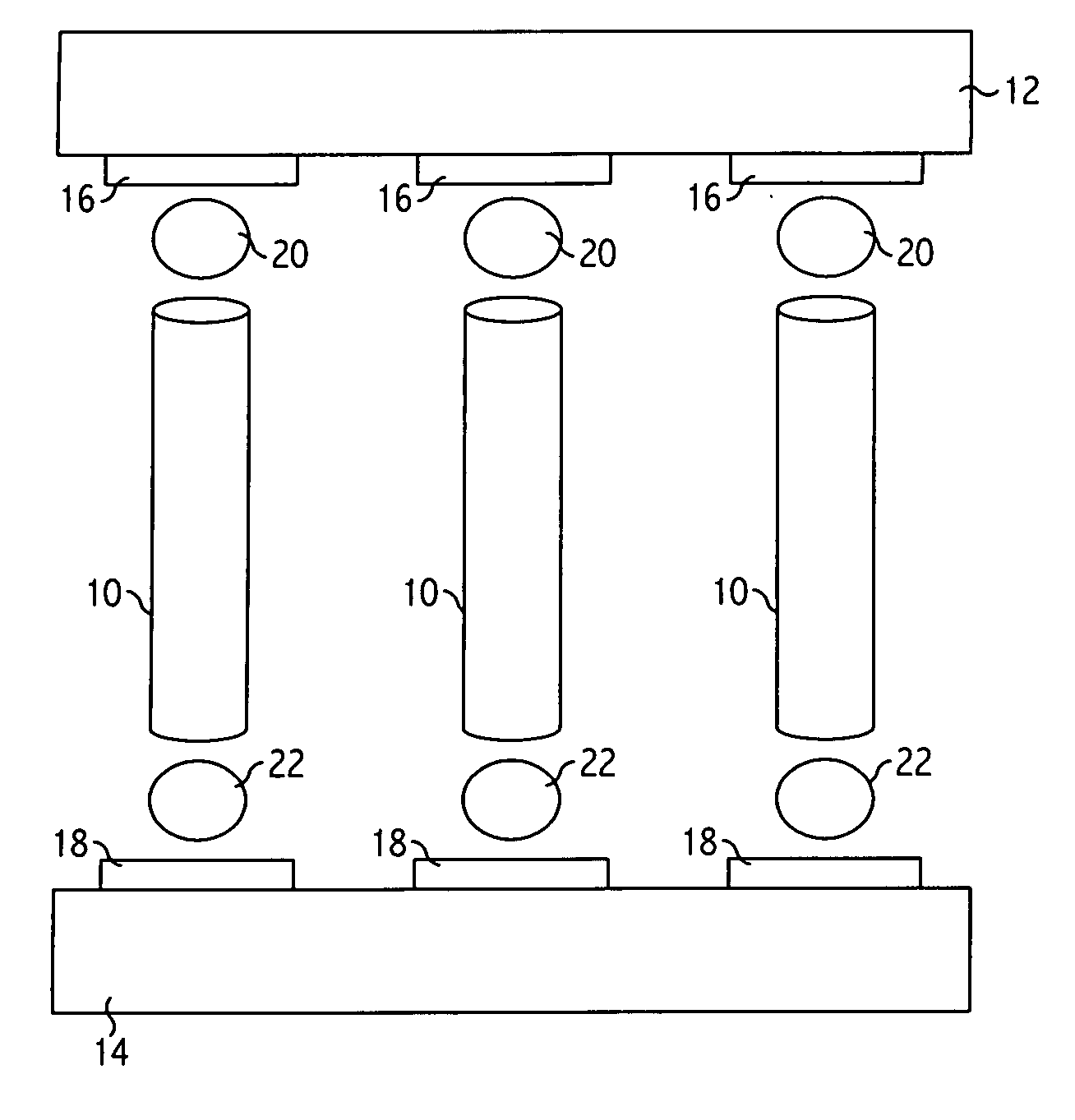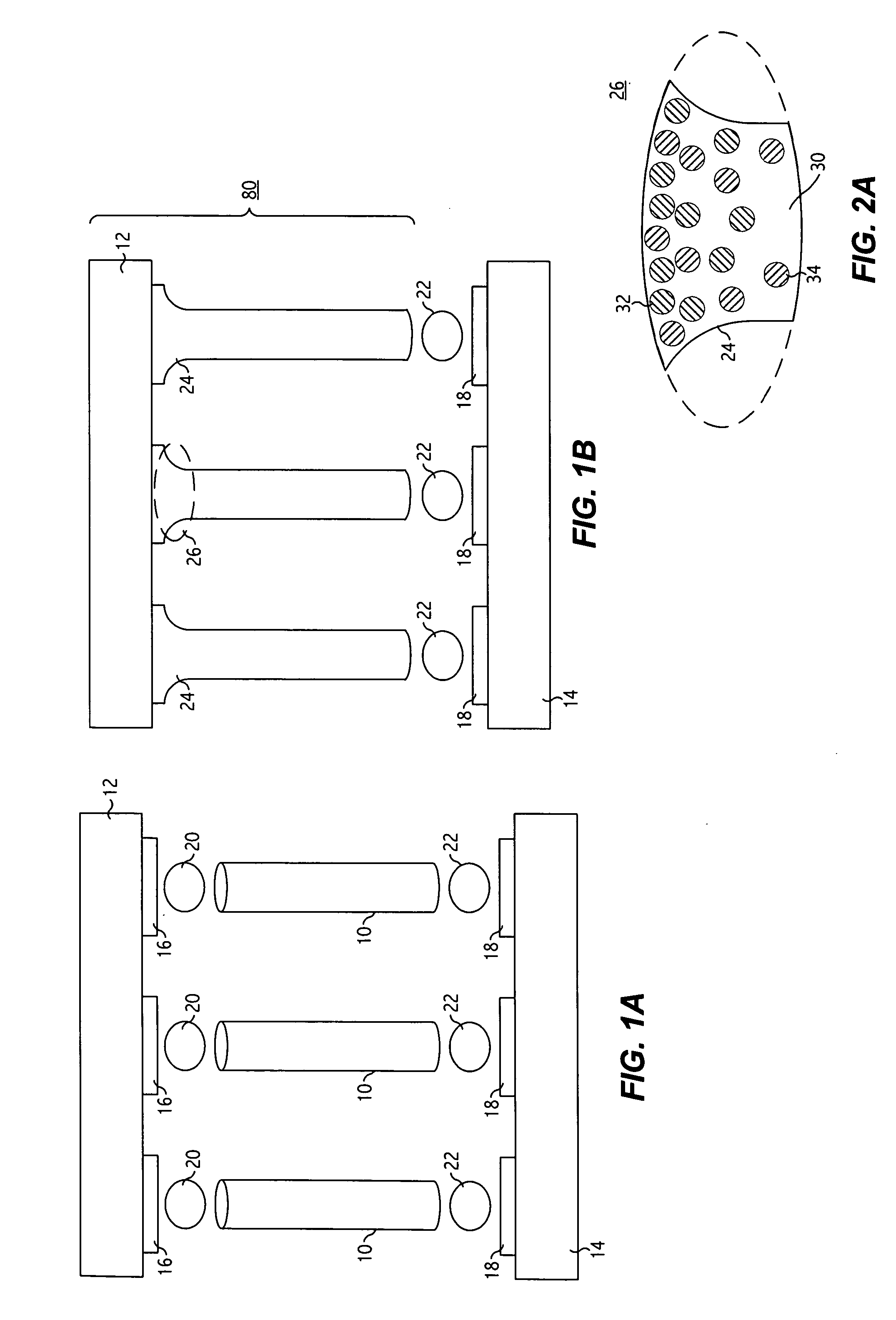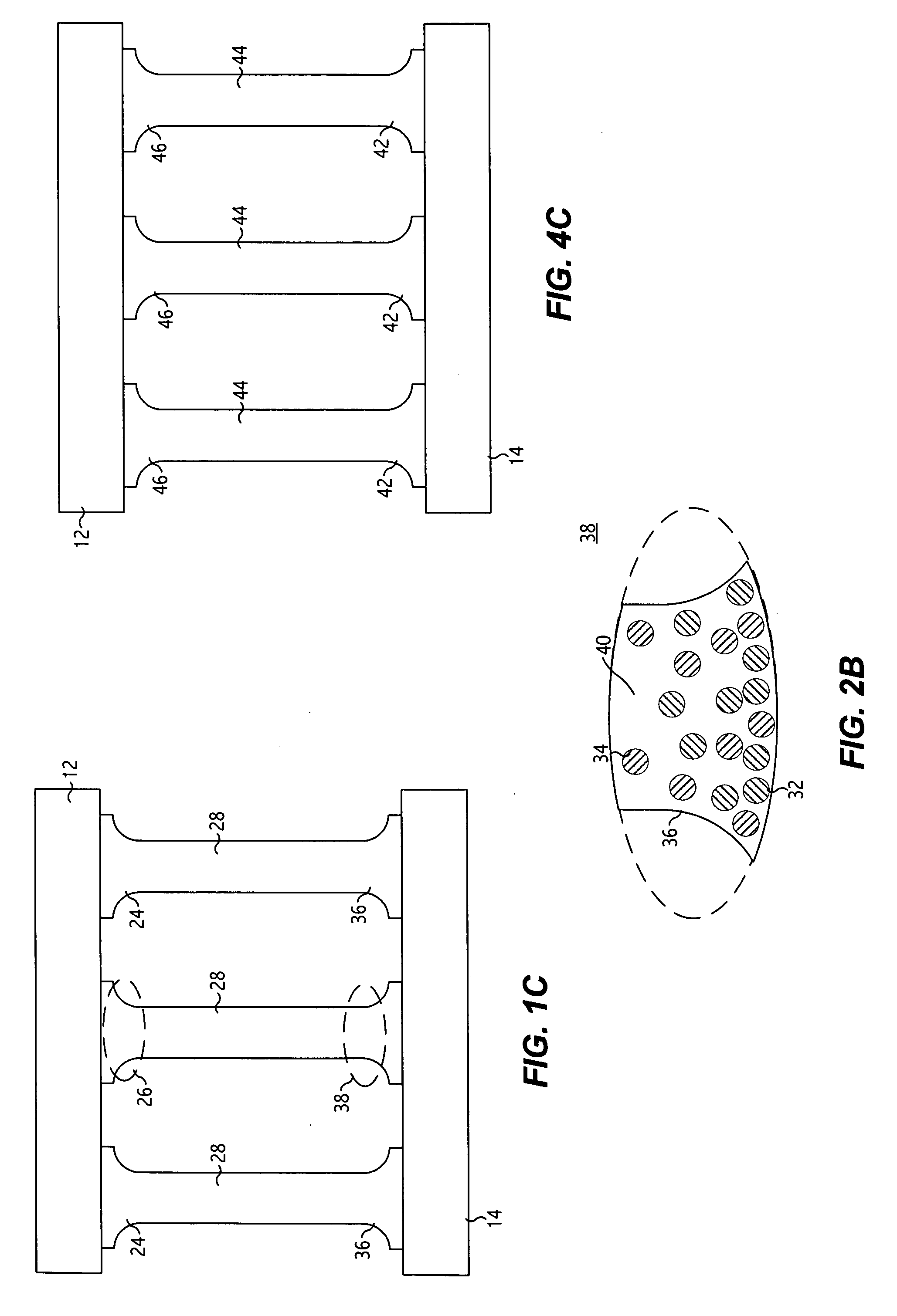Ternary alloy column grid array
a grid array and alloy technology, applied in the field of electronic components packaging, can solve the problems of mechanical reliability problems, thermal management issues,
- Summary
- Abstract
- Description
- Claims
- Application Information
AI Technical Summary
Benefits of technology
Problems solved by technology
Method used
Image
Examples
example 1
[0027]FIG. 1A depicts a chip carrier before attachment to a printed circuit board using an alloy column and two solder compositions comprising elements of a common ternary alloy system. In one preferred embodiment, a column 10 for attaching a chip carrier 12 to a printed circuit board (PCB) 14 is formed from approximately 80 percent by weight (80 w / o) tin and 20 w / o silver. This composition has a liquidus temperature of approximately 380-385° C. and a solidus temperature of approximately 230° C. The column 10 may be formed by any suitable method. For example, column 10 may be cast or cut from wire or ribbon, using any of the techniques standard in the solder industry. One end of the column is to be attached to the chip carrier 12 with a quantity of solder 20 and the other end to the PCB 14 with a quantity of solder 22. Generally both chip carriers and PCBs have solderable bonding pads 16, 18 for attaching one to the other and allowing for input and output operations. Often the bondi...
example 2
[0034]FIG. 4A depicts a chip carrier before attachment to a printed circuit board using an alloy column and two solder compositions comprising elements of a common ternary alloy system. The column 10 for attaching a chip carrier 12 to a printed circuit board (PCB) 14 is formed from an alloy of Ag in Sn with a composition higher in Ag than the Sn—Ag eutectic composition, having a liquidus temperature above about 300° C. Referring to FIG. 4B, one end of the alloy column 10 is attached to a bonding pad 18 on the PCB using a solder 20 with a composition significantly richer in both silver and copper than the SAC eutectic composition and having a liquidus temperature greater than approximately 240° C. and a solidus temperature of approximately 216° C., forming a high-temperature solder joint 42. To accomplish the attachment, the column 10 is aligned to a bonding pad 18, solder 20 is applied to the bonding pad 18, the column 10, or both, and the solder 20 is heated to a temperature above ...
example 3
[0036] Alloy columns may be prepared for use by attaching the relatively high liquidus solder to one end of the column. Referring to FIG. 5A, the solder 20 can be attached to the alloy column 10, producing a column preform 70, shown in FIG. 5B. As shown in FIG. 6, the preform 70 can then be placed so the solder makes contact with a substrate 72, such as a PCB or a chip carrier, and the solder can be flowed to attach the column to the substrate. Additional preforms 74 may optionally be attached during the same or a subsequent bonding operation. FIG. 7 depicts a preform 70 attached to a tape 76 for use in tape automated bonding. The tape 76 may support many additional preforms 74.
PUM
| Property | Measurement | Unit |
|---|---|---|
| eutectic temperature | aaaaa | aaaaa |
| melting point | aaaaa | aaaaa |
| liquidus temperature | aaaaa | aaaaa |
Abstract
Description
Claims
Application Information
 Login to View More
Login to View More - R&D
- Intellectual Property
- Life Sciences
- Materials
- Tech Scout
- Unparalleled Data Quality
- Higher Quality Content
- 60% Fewer Hallucinations
Browse by: Latest US Patents, China's latest patents, Technical Efficacy Thesaurus, Application Domain, Technology Topic, Popular Technical Reports.
© 2025 PatSnap. All rights reserved.Legal|Privacy policy|Modern Slavery Act Transparency Statement|Sitemap|About US| Contact US: help@patsnap.com



